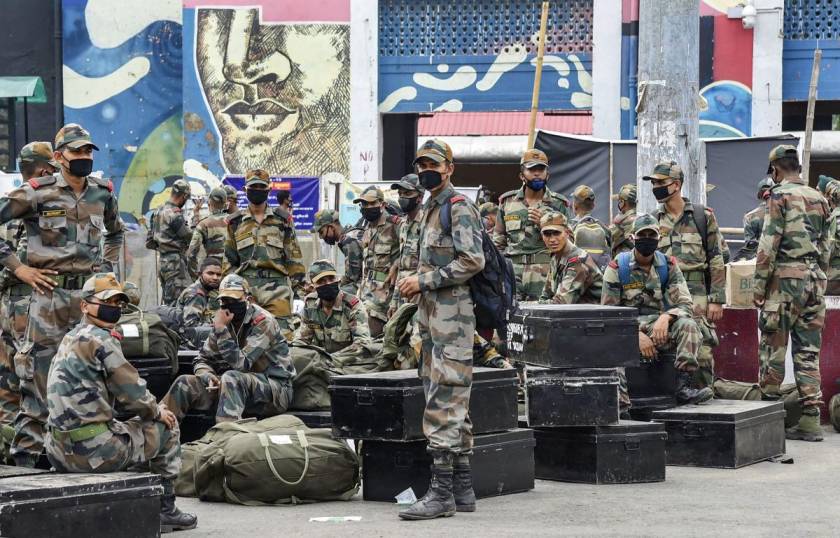Highlights:
- Army considering 3 year tenure for civilians
- The Army is also considering to take personnel from CAPF and Paramilitary for a maximum of 7 years
The Indian Army is considering a proposal which will allow the civilians – including young working professionals – to join the force for 3 years as officers or other ranks in departments such as front-line formations and logistics.
Apart from this, the Indian Army is also considering of taking personnel from the Central Armed Police Forces (CAPF) and the paramilitary for a maximum of 7 years after which they will be allowed to return to their parent organisation, said the military sources.
This “Game changing” proposal will allow the civilians to work for 3 years in the Army and is currently being considered by the top commanders. Colonel Aman Anand, spokesperson of the Army said, “If approved, it will be a voluntary engagement and there will be no dilution in selection criteria. Initially, 100 officers and 1,000 men are being considered for recruitment,”.
The sources said that the details about the proposal are still being worked out and told that both fitness and age of a candidate will be among the chief criteria for the recruitment under the “Three-Year Short Service” or “Tour of Duty” Scheme.
A source said, there is a “resurgence of nationalism and patriotism” in India and this proposal is attempting to tap into that feeling of the youth who, though, do not want to join the force as a profession but wants to experience the military life for a short duration of time.
Also Read: WHO Warns The Globe That The Novel Coronavirus “May Never Go Away”
The proposal put forward will be discussed at a conference of the top Army commanders following to this the process would be taken forward as per the sources who added that the scheme will also allow the Army in saving cost.
Currently, under the Short Service Commission of the Army, it recruits young people for a tenure of 10 years which is extendable to a maximum of 14 years. As per the proposal, the candidates which will be recruited under the Tour of Duty will be eligible to be deployed as combatants in key forward locations and will have no restrictions on the extent of their roles.
Quoting an internal study, sources said that the Army will gain substantial financial benefit from this scheme as it will not only save a huge amount of money in severance packages, gratuity, pension but also leave encashment.
“The Army has made a comparative study on whether the training costs on people to be recruited under the Tour of Duty would be justified with their subsequent limited employment for only three years.” says a leading news agency in India.
As per the initial approximation of the financial calculations, it was shown that the financial benefits of the scheme would be exponential. The sources claims that the approximate calculations show the cost of pre-commission training, salary and other expenses to be almost Rs. 5.12 crore and Rs. 6.83 crore on an officer if he/ she is released after 10 and 14 years respectively. To put it into perspective, the cost of those who will be released after only 3 years would be between Rs. 80 lakhs and Rs. 85 lakhs.
“Since, approximately 50 per cent to 60 per cent of the Short Service Commissioned officers are granted Permanent Commission, the cost of their retention till they are 54 years old is too high”.
The savings from mere 1,000 soldiers could be as high as Rs. 11,000 crore, which then could be further utilised for modernisation of the armed forces. Adding that a stint in the Indian Army will help the young people in getting jobs in both corporate and government sectors.


